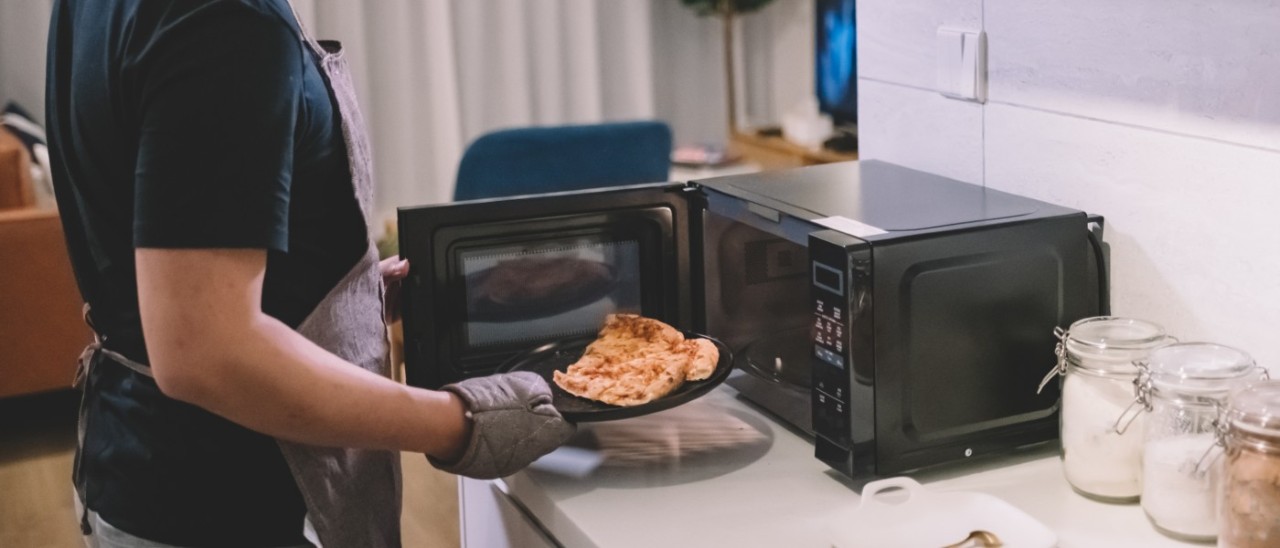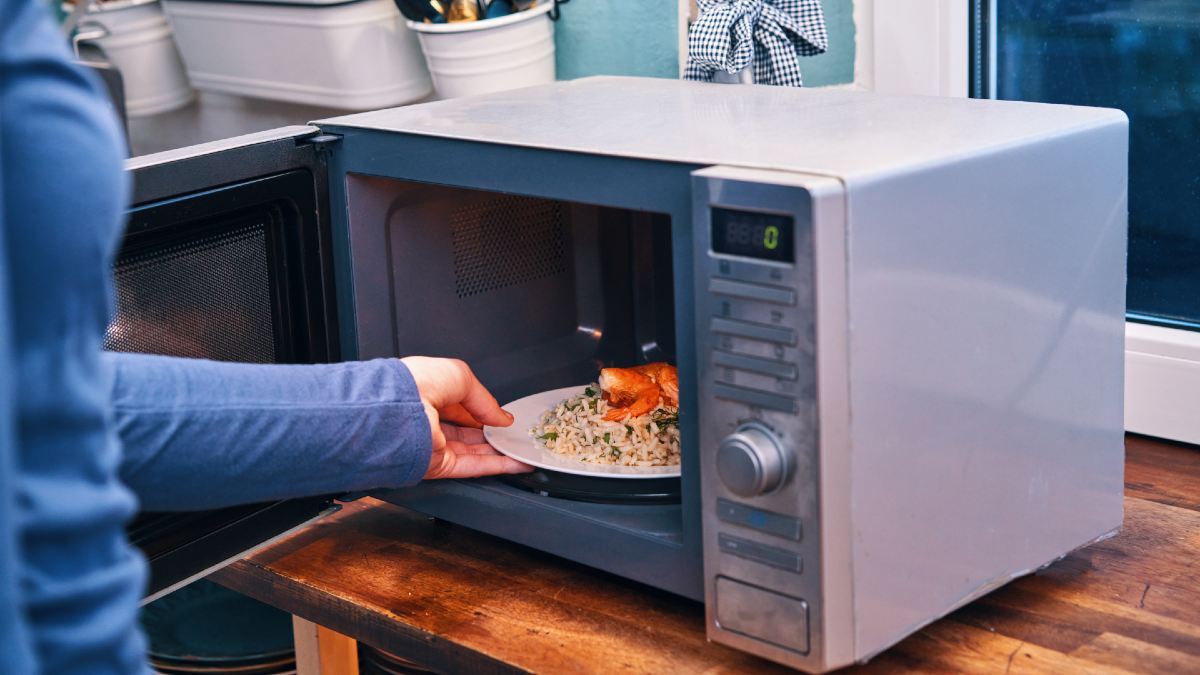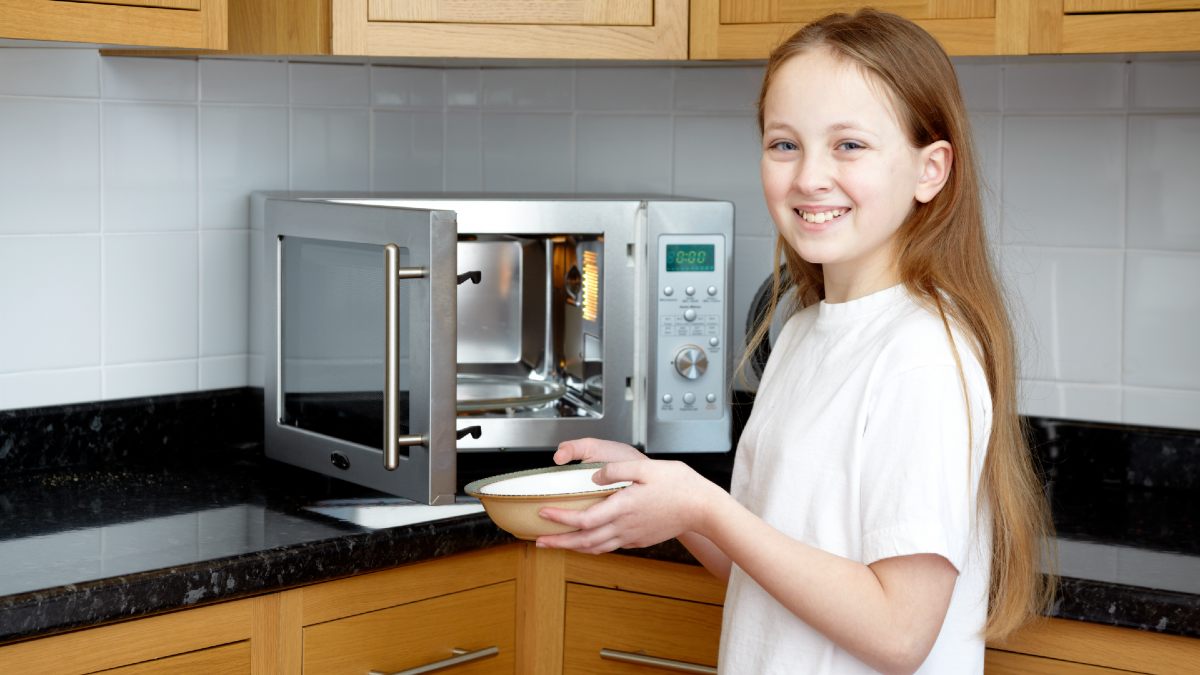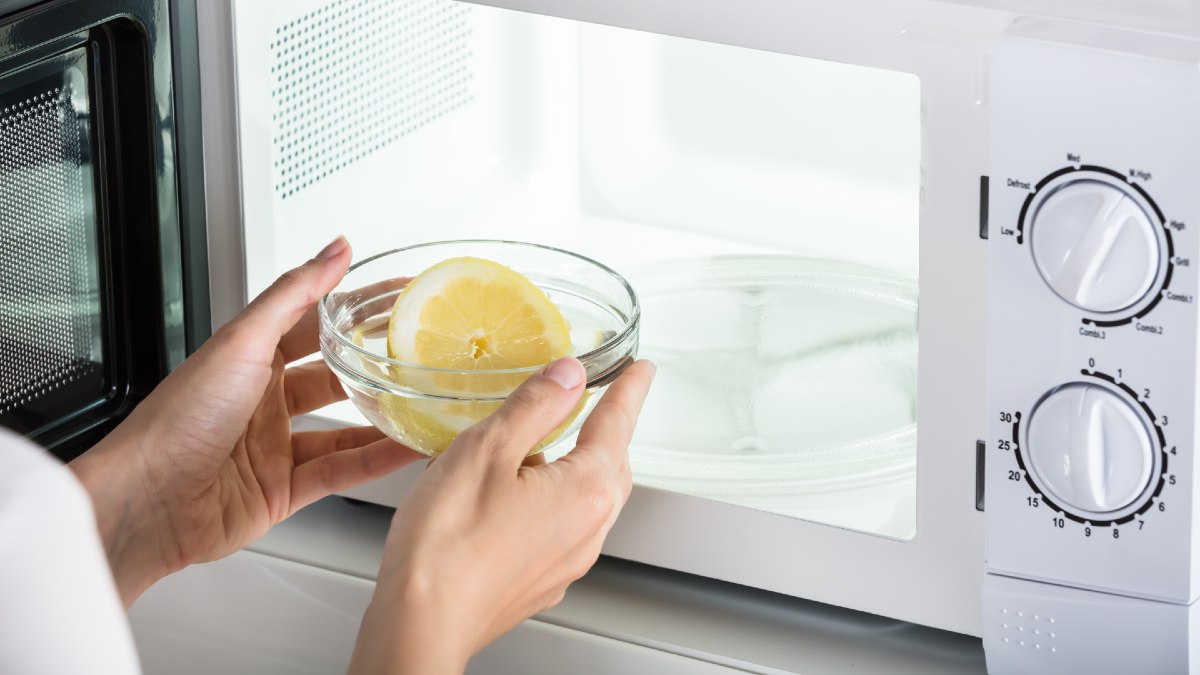Australians have fallen in love with air fryers. Discover how they work, their energy efficiency, what to avoid and which type is best for you.
Microwave safety and when to replace one

Here’s everything you need to know to stay safe and get the most out of your microwave oven. This comprehensive guide outlines how to safely use and maintain your microwave, when to upgrade, how to dispose of old units responsibly, and when to call in an electrician.
Microwaves are one of the most common appliances in Australian kitchens. They're quick, convenient, and ideal for everything from reheating leftovers to defrosting dinner in minutes.
But despite their everyday utility, microwaves come with their own set of safety considerations. Whether you’re using a microwave to make popcorn or cook a frozen meal, it’s important to do so safely.
Looking for new energy efficient appliances?
How to use a microwave safely
Microwave fire safety: what you need to know
Though rare, microwave fires can happen - often due to user error. Some of the most common causes of microwave fires include overheating food, using inappropriate containers or operating a damaged appliance.
Here are some key safety tips to help prevent a microwave fire:
- Never microwave metal - this includes aluminium foil, metal travel mugs or even food containers with metallic trims or handles. Metal reflects microwave energy, which can cause sparks and fires.
- Avoid superheating liquids - superheating occurs when liquids are heated beyond their boiling point, when they can explode if disturbed. Always place a non-metallic object (like a wooden stirrer) in the cup when heating water or other liquids: the uneven surface of these objects provides a place for bubbles to form, preventing superheating. Also try heating the water in short bursts, such as 30-60 seconds, rather than one long period. Let the heated liquid stand in the microwave for a brief period before moving or adding anything to it.
- Watch for popcorn fires - many microwave popcorn bags advise two to four minutes of cooking time, but your microwave’s power may vary. Stay nearby, listen to the popping slow and never leave the microwave unattended.
- Don’t run the microwave empty - without food to absorb microwave energy, the appliance can overheat and potentially damage internal components or start a fire.
- Clean spills and splatters - built-up grease and food particles can ignite under high heat. Wipe down your microwave regularly.
- Check for damaged door seals - if the door doesn't close properly or the seal is cracked, microwaves may leak or fail to contain heat correctly. This poses both fire and radiation safety risks.
Kitchens are one of the most common locations for fires to start in the home. By knowing and adhering to current mandatory safety regulations, such as properly installing and maintaining smoke alarms, you can help ensure your house and property is as fire safe as possible year-round.
If your microwave catches fire, do not use water to extinguish an electrical fire. Instead, turn the microwave off immediately. If safe to do so, unplug it from the wall. Keep the microwave door closed, which deprives the fire of oxygen. Call triple zero (000) if the fire doesn't stop quickly.

Never microwave metal, and clean any food or liquid spills immediately. Image: Getty
When to replace a microwave
Microwaves aren’t designed to last forever. Depending on usage and build quality, most units last between seven to 10 years. But aside from age, there are several telltale signs that it might be time to replace your microwave.
Upgrade if you notice:
- Uneven heating - if food comes out cold in some spots and boiling in others, your microwave may no longer be distributing energy efficiently.
- Loud or unusual noises - buzzing, humming or grinding sounds can indicate a failing magnetron or fan.
- Smoke, sparks, or burning smells - these are serious safety red flags. Stop using the unit immediately.
- The door doesn’t seal properly - gaps in the door or broken latches mean microwaves can leak radiation and should not be used.
- Touchpad or display malfunctions - a failing control panel can make operation unreliable or unsafe
- Signs of electrical damage - burn marks, melted cords, or exposed wiring are all safety hazards
- A persistent burning smell despite cleaning - it could be an internal wiring issue that isn’t visible from the outside.
You can try contacting the manufacturer if your microwave is within its warranty period. The manufacturer may be able to repair or replace your microwave. It's a good idea to register your new products for extended warranties if offered by the manufacturer for this reason.
That said, newer microwaves often come with improved energy efficiency, quieter operation, and advanced cooking features like inverter technology, which maintains more consistent temperatures and preserves food texture.
Disposing of old microwaves responsibly
A microwave may look like a simple appliance, but it contains a range of components that can harm the environment if not disposed of correctly. Fortunately, there are safe and sustainable ways to dispose of or recycle old microwaves.
Your options include:
- Council e-waste collections - many Victorian councils offer periodic e-waste collection days or have drop-off depots. Microwaves are classified as electronic waste and cannot be placed in your regular rubbish bin.
- Retailer take-back schemes - some electronics retailers will take old appliances when you purchase a new one.
- Dedicated e-waste recycling centres - local transfer stations often accept microwaves.
- Secondhand donations - if your microwave still works safely, consider donating it to a local charity, op shop or community group in need – though be sure to check that it still meets safety standards.
Avoid sending your microwave to landfill where possible. Recycling recovers valuable metals and prevents hazardous components like lead or mercury from harming the environment.

Microwaves can be more energy-efficient than ovens or stovetops when heating small portions, or when reheating. Image: Getty
Energy efficient microwaves
Microwaves are generally more energy-efficient than ovens or stovetops when it comes to reheating, or heating small portions, since they heat food directly rather than warming the surrounding air.
To use your microwave most efficiently, use microwave-safe lids or covers to trap steam and speed up cooking, reducing energy use. You can also save power by reheating multiple small meals together rather than individually, if they fit.
Unplug your microwave when not in use. They draw standby power even when idle, usually to display the time. Switching it off at the wall can save a small but cumulative amount of electricity over time.
Some microwave models are generally more efficient than others. Opt for inverter microwave models, which use inverter technology to heat more evenly and use less power than traditional pulse-on/pulse-off microwave models. Match your microwave size to your needs: a larger microwave will draw more power.
Look for models with high star ratings under the Energy Rating Label system, although not all microwaves require labelling. Choosing a quality unit from a reputable brand can help maximise energy efficiency over time.
More: What is an air fryer? Everything you need to know
How to clean your microwave
It's important to regularly clean your microwave to avoid unwanted stains and smells.
To clean your microwave easily and effectively, place a microwave-safe bowl filled with water and either a quarter cup of vinegar or several lemon slices in your microwave and heat it for about three minutes (or until the water boils). The steam from this mixture can loosen hardened food spills and help eliminate smells. Leave the boiled water sitting in the microwave with the door closed for a few minutes to let the steam do its work.
Use oven mitts to remove the bowl. Remove the turntable (if your model permits) to wash with dish soap later. Now you can easily wipe down the microwave's interior with a clean cloth.
For stubborn stains, you can make a paste with three tablespoons or water and a quarter cup of baking soda. Scrub the stubborn spots with the paste on a toothbrush before rinsing and wiping clean.

Clean your microwave regularly to avoid nasty smells and potential fire hazards. Image: Getty
When to call an electrician about your microwave
While many microwave issues can be resolved by simply replacing the unit, some situations call for a licensed electrician or qualified appliance technician.
Call an electrician if any of the following occurs, as they relate to electrical circuit issues:
- Your microwave keeps tripping the circuit breaker - this may indicate an overloaded circuit or electrical fault.
- Your powerpoints spark when plugging in the microwave - this suggests a faulty outlet that should be checked for safety.
- You’re installing a built-in or over-the-range microwave - hardwiring or wall mounting should only be done by a licensed professional.
Attempting DIY repairs on a microwave can be extremely dangerous due to the high-voltage capacitor inside, which can retain a lethal charge even when unplugged. Always leave internal repairs to professionals.
RACV Trades is a trading name of RACV's trade partner, Club Home Response Pty Ltd (Victorian registered domestic building practitioner number CDB-U 100178). All works are performed or arranged by Club Home Response Pty Ltd. trading as RACV Trades. See RACV Trades terms and conditions.


